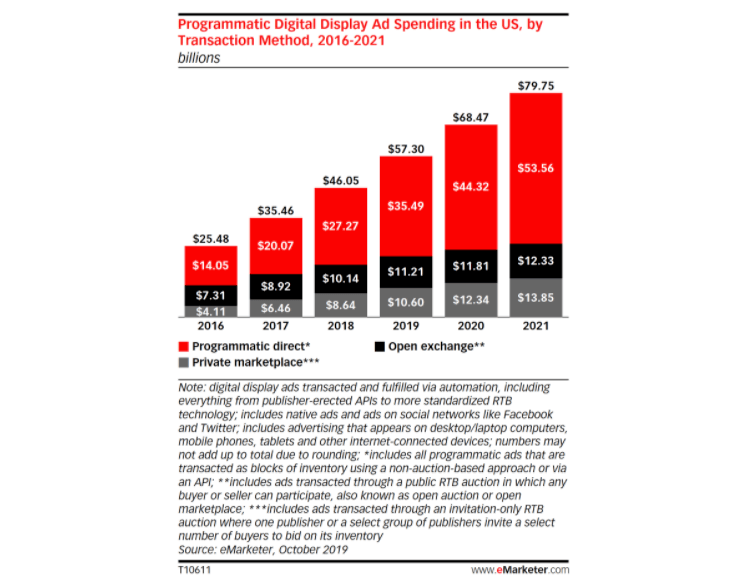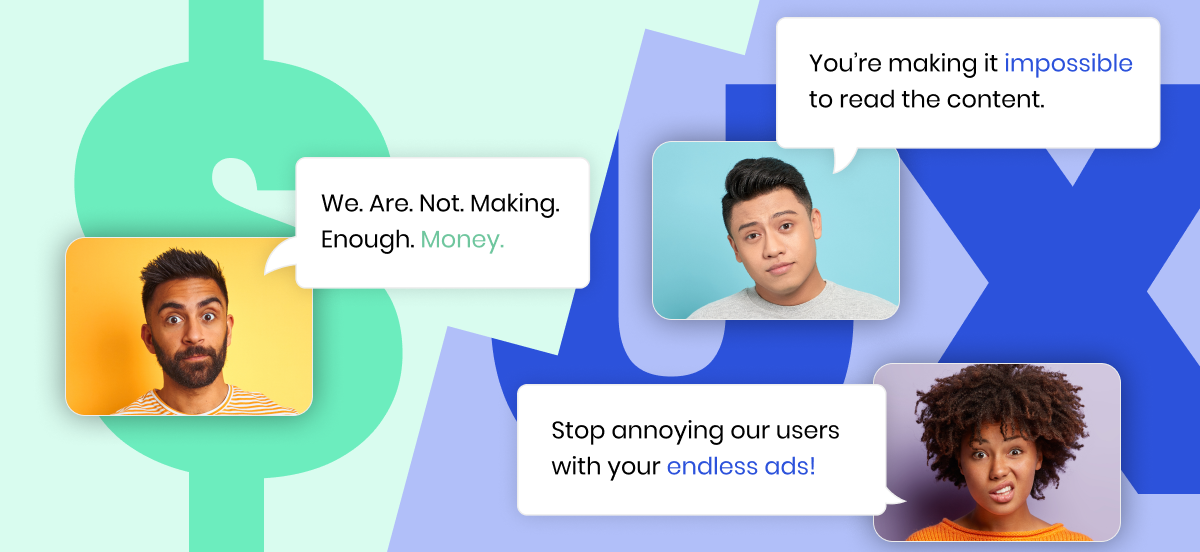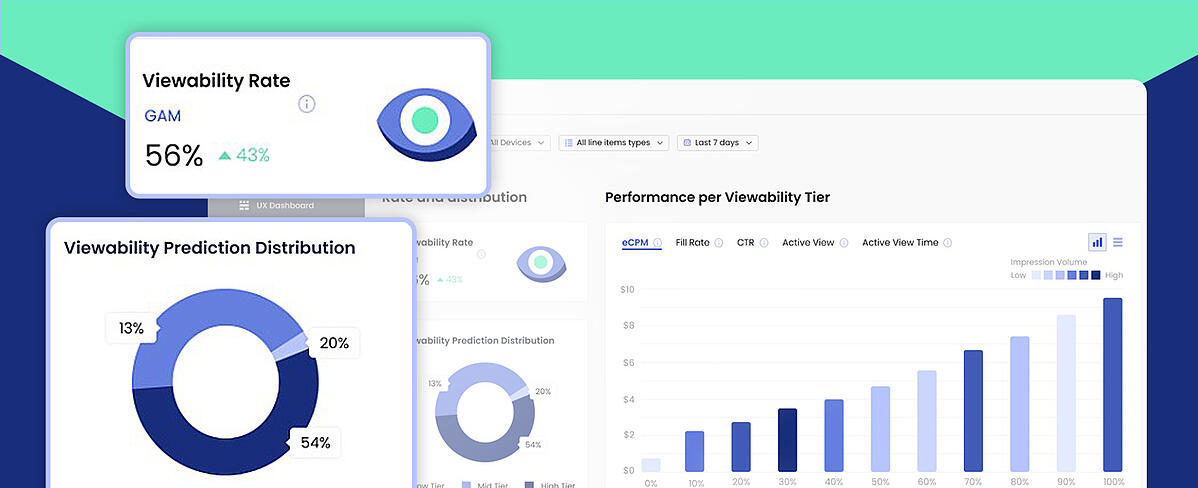How important is Viewability to PMPs… Today?
By Asaf Shamly | January 28, 2021

Critical. As programmatic reigns in our current state of affairs, Private Marketplaces (PMPs) and achieving tough viewability requirements gain new importance in maximizing revenue potential.
The buy side is data-driven, leveraging granular insights at the impression level in real time. Meanwhile, publishers sell against averages and placements, relying on historical data and manual optimization which leave revenue on the table and hinder success with PMPs.
Aligning deep publisher control over ad inventory with buy-side requirements evens the playing field. It positions publishers miles ahead of manual optimization efforts – which continuously fall short as industry and brand requirements change – and blazes a direct route to higher viewability both overall and at the impression level for capturing PMPs.
Let’s get to the core of it.
According to Statista, the growth rate of monetized PMP ad impressions worldwide increased by 69% in 2019 from the previous year.
This year, for the first time, programmatic ad spending on private marketplaces (PMP) will surpass that on open exchanges, according to eMarketer.

Shifting to programmatic and PMPs can be a great opportunity for publishers in this economic downturn.
Why? Advertisers are moving away from direct sponsorships, and rethinking their buy for the near future. Ultimately, advertisers will turn towards a marketplace structure, programmatic or PMPs, to gain more control over their budget and optimize ROI with shorter commitments.
VIEWABILITY AND PMPS – A PERFECT MATCH
AGENCIES & BRANDS WANT IT
In a Reddit post from 2018, an agency complains that a publisher’s CPM rate for a campaign remained the same, even though viewability dropped from 80% to 50%. When the publisher moved the campaign to higher viewable spots that reach the minimum 80% threshold, scale dropped by 50%.
Not only was the agency irate at the publisher’s reactionary manual approach, but they also suggested that the publisher might be f&@%$ing with them – the technical term for brand-image fail. It’s also a perfect illustration of the pitfalls that come with manual optimization.
Then there’s the possibility of the dreaded chargeback; one of the commenters adds: “As part of my agency’s agreement with publishers if they deliver below 70% viewability they are required to ‘make-good’ that ad spend. Worth a thought if you have the budgets for negotiation and can put in place at signing of PMP.”
PUBLISHERS WANT IT
More recently in February 2020, a leading publisher that had just finished a Browsi trial and is now a full partner decisively stated that “we simply do not want to miss any PMPs anymore due to viewability, and therefore we do not want viewability to be an issue anymore.”
Meeting viewability targets has long been one of the biggest challenges facing publishers, particularly when it comes to PMPs (and direct campaigns too), where it’s imperative to deliver high viewability and avoid ad waste.
SO WHAT’S THE PROBLEM?
Clearly, both publisher and agency/brand partner care about viewability, and both sides benefit one another when they align. I don’t think anyone believes that agencies are unreasonable in requesting viewability as a component of their campaign, and no one would assume that publishers want to restrict campaign fulfillment if they can avoid it.
TECH!
The issue lies in tech, and that’s an objective observation. Advertisers work with granular insights at the ad call, buying impressions that they believe will cross their minimum viewability requirement. Meanwhile, publishers sell average viewability at the placement level, simply because they are creating and optimizing ad layout at the placement level – manually, involving multiple teams (Ad Ops, Product, UX, and R&D), and relying exclusively on historical data. That’s a stark disconnect from the real-time environment that is the digital page.
Result? As viewability-targeted campaigns go straight to premium placements, if you’re a publisher with average viewability and do not have a lot of these placements (and inventory) to sell, that’s a big problem.
So how can everyone get onto the same page, when agency requirements increasingly tighten, and manual optimization puts stress levels for AdOps off the charts? The answer is simple, and it’s not a buzzword, it’s the actual application of AI to ad layout, looking at multiple data points in real-time to create ad inventory for publishers, enabling granular control across 100% of impressions.
Planning, selling, closing, fulfilling – when each of these stages is working with an ad layout that aligns with the requirements they aim to fulfill, publishers can stop scrambling and guessing around ad placements, and focus on actual viewable impressions.
THE OPTIMAL TECH SOLUTION
A tech solution should accomplish the following:
- Ensure that each user, on every page visit, has the highest-viewable ad inventory possible without compromising benchmarked scale and UX.
- Confirm in advance whether an impression is viewable, before sending an ad request from any placement. Knowing the probability that an impression will be viewable is crucial here; even low-viewable ad placements can generate a high-viewable impression. And this must be done in real time to avoid sending the market a signal that a given placement has low viewability.
- Communicate points 1 and 2 to your ad server and target it with the right recipient; PMP, Direct campaign, specific floor… or opt not to create an impression at all. Your call.
Altogether this leads to reduced ad waste for PMPs, and a new level of confidence for agencies and brands that understand their campaigns are based on actual impressions, rather than averages.
We invite you to learn more about our related methodology and successes at Browsi, and how we can align your ad inventory with the toughest viewability requirements in PMPs coming down the pike. Even in this climate, particularly in this climate, we can help.
Get in touch for details.
Latest Articles
-

Do NOT make me choose between a great UX and boosting my revenue!!
The ongoing clashes between revenue, product, and editorial teams are painful to say the least. It doesn’t have to be this way.
View Now -

Your Brand New Viewability Dashboard!
Understand your inventory breakdown with the new Viewability Dashboard.
View Now -

Maximize Your UX & Revenue Data With Personalized Reports
Ready to uncover insights and step up your ad layout strategy?
View Now
